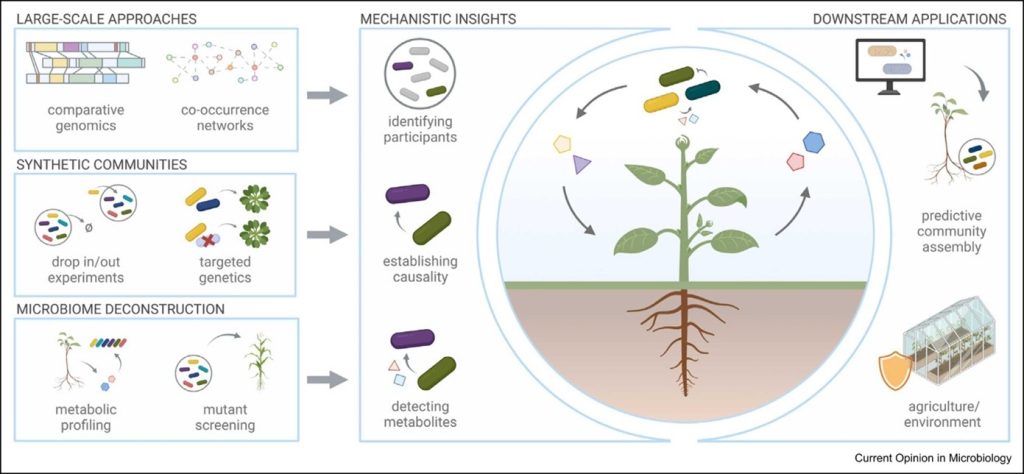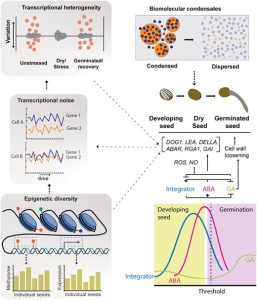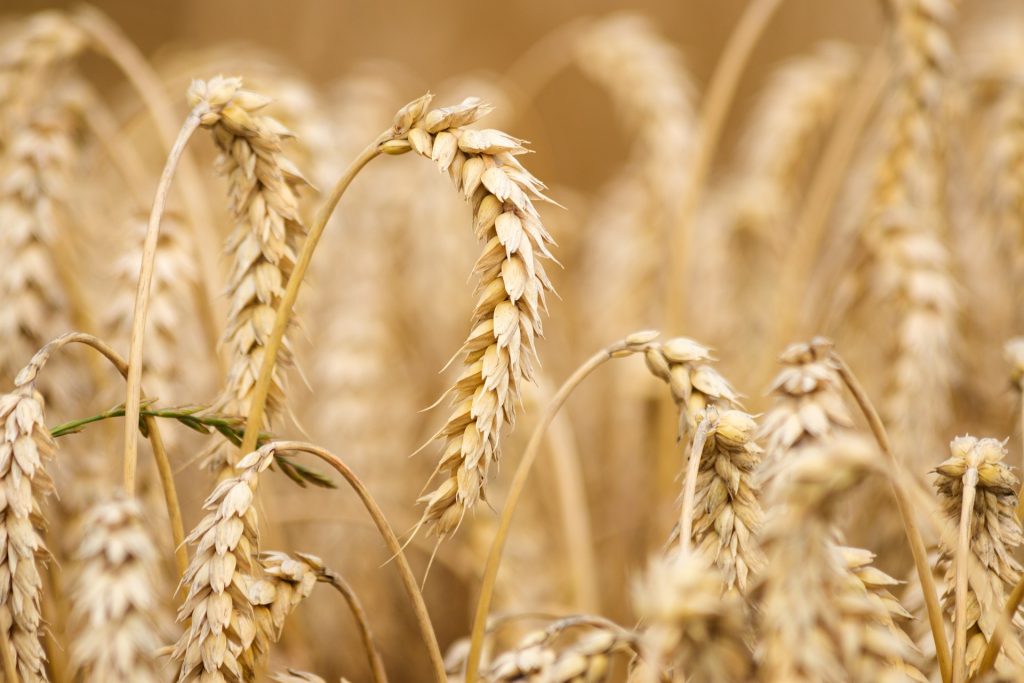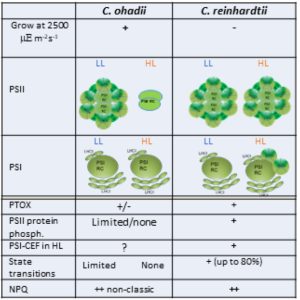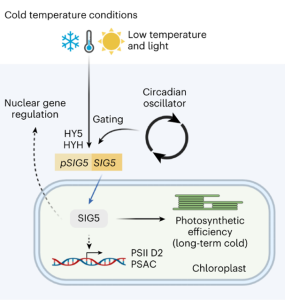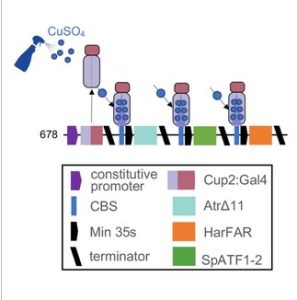Plant Science Research Weekly: April 28, 2023
Review: Resolving metabolic interaction mechanisms in plant microbiomes
Life is spurred forward by the power of metabolic interactions. Within the plant microbiome, microbial communities use diverse mechanisms to thrive, survive, and multiply. In this review, Pacheco & Vorholt describe the interplay of metabolic interactions within plant microbiomes and review current approaches. Plants host a wide range of microbes with various metabolic strategies, such as polysaccharide degraders on leaves and pathogens that feed on root exudates. These interactions can significantly impact plant growth, ecosystem productivity, and nutrient use. Despite the challenges posed by the complexity of plant microbiomes, methods have been developed to discover how specific microbe interactions affect the microbiome. The creation of co-occurrence networks via high throughout sequencing melded with microbial lifestyle characteristics can provide insight into the interplay of microbial interactions and metabolic reactions. As examples, some bacteria co-occur with others due to cross-feeding, and plant root exudates change upon interaction with some bacteria. In addition, the authors examine how synthetic communities can reveal how the presence or behavior of one species affects the growth, survival, or reproduction of another species. Furthermore, predictive computational community modeling can be employed to understand community dynamics and integrate the previously described approaches to positively impact crop protection. (Summary by Eric Hobson @ehobs) Curr Opin Microbiol 10.1016/j.mib.2023.102317
Review: Why don’t genetically identical seeds germinate at the same time?
If you’ve ever conducted a germination experiment, you’ve probably asked yourself: what causes seeds to germinate at different times? The most obvious answer would be to point to genetic differences, but this phenomenon also occurs in genetically identical seeds. In this exciting paper, Sharma and Majee bring us a comprehensive review of the different physiological and molecular mechanisms that have been proposed, including transcriptional heterogeneity and noise, epigenetic diversity, and biomolecular condensates. All these mechanisms point out potential sources of variation in gene expression, phytohormone concentrations and the biochemical availability of these compounds that can lead to a seed germinating more or less quickly. The review also discusses the ecological advantages of seed germination variability and how modern techniques, such as seed priming, can reduce it and ensure higher synchronization in agricultural contexts. While there does not appear to be a definitive answer to explain germination heterogeneity, this review paves the way for future research to help us understand the mechanisms behind it. (Summary by Carlos A. Ordóñez-Parra @caordonezparra) J. Exp. Bot. 10.1093/jxb/erad101
Review: The role of ethylene in plant temperature stress response
The phytohormone ethylene is known for its importance in plant development and mostly for its role in fruit ripening. However, in this review Huang et al. summarize recent findings on ethylene’s role in temperature (hot and cold) stress response and ethylene crosstalk with other hormones. Interestingly, different plants respond to heat stress differently. For example, heat stress induces ethylene production in Arabidopsis, wheat, and pea whereas it inhibits ethylene production in tomato and lettuce. These effects are also tissue specific; in Arabidopsis, at 45°C ethylene levels in roots and shoot apices remain unchanged but are induced in leaves. Furthermore, thermotolerance of many plants is induced by external application of ACC (an ethylene precursor) or ethephon (converted to ethylene in the plant). Generally, the heat-stress responses are mediated by heat shock proteins, which are induced by heat shock transcription factors, and in Arabidopsis ethylene signaling activates some heat shock transcription factors. Ethylene also mediates freezing tolerance in a species-specific manner. Freezing tolerance in tomato, tobacco and Arabidopsis is increased by ACC application, whereas inhibitors of ethylene synthesis improve freezing tolerance in Medicago truncatula. Thus, effects of ethylene stress response can be positive or negative depending on plant species and developmental stages. Transcription factors in the AP2/ERFs family integrate BR, JA and ABA signaling and could provide targets for genetic efforts to enhance plant tolerance to heat or cold stress. (Summary by Indrani Kakati Baruah, @indranikb) Trends Plant Sci. 10.1016/j.tplants.2023.03.001
SSR markers are useful tools in wheat varietal purity and genetic diversity assessment
Different breeding programs worldwide have developed various cultivars that can cope with changing and increasingly unpredictable environments while meeting market needs. These developments have brought a new challenge: creating tools to distinguish such varieties and trace their genetic purity. Using 40 wheat cultivars grown in Romania, Vasile and collaborators show that Simple Sequence Repeat markers (SSRs; short base-pair sequences repeated several times in tandem) are promising tools to achieve that. Of the 22 motifs evaluated, all but one showed some variation, suggesting that they can indeed be used to assess varietal purity. Moreover, these sequences helped distinguish certified wheat materials from those of other crops and even other wheat varieties. This research shows the utility of SSRs and, as a result, expands the current toolbox that plant breeders and producers have for assessing wheat varietal purity. In fact, materials from harvests of different years showed high similarity for these markers, suggesting that current agricultural practices succeed in maintaining such purity. (Summary by Carlos A. Ordóñez-Parra @caordonezparra) Seed Sci. Technol. 10.15258/sst.2023.51.2.01
A unique photoinhibition protection mechanism in Chlorella ohadii that thrives in extreme high-light intensities
In plants and algae, excessive light can damage the photosystem and lead to a decrease in photosynthetic capacity, a process called photoinhibition (PI). Levin et al. showed that Chlorella ohadii isolated from the Negev desert in Israel lacks or has limited capability of the usual photoprotection mechanisms seen in plants and model microalgae species including psbS, LHCSR, PSII protein phosphorylation and state-transitions. Instead, C. ohadii accumulates a high amount of carotene biosynthesis related protein (CBR) at high light intensity. These CBRs were suggested to bind to overexcited chlorophylls to dissipate energy, avoiding reactive oxygen species (ROS) formation and photoinhibition. In addition to CBRs, C. ohadii undergo major structural changes to the photosystem II antennae which lowers the amount of light entering the reaction center. Further studies of the high-light repsonses of C. ohadii and investigating CBR overexpression in plants could could contribute towards building resilient and high-yielding crops that can grow in desert environment. (Summary by Yen Peng (Apple) Chew @_applechew) Plant J. 10.1111/tpj.16241
Point mutations in the catalytic domain disrupt cellulose synthase vesicle trafficking and protein dynamics
Cellulose is an important and useful biopolymer, present in plant cell walls and synthesized at the plasma membrane by protein complexes called cellulose synthase complexes (CSCs) composed of multimers of cellulose synthase (CESA). CESAs are embedded in the membrane and move along the membrane as they polymerize cellulose. In a new study, Huang et al. examined the properties of a suite of single-amino acid mutations in the catalytic domain of CESAs to determine how they impact not only the catalytic properties, but also the movement of CESAs and CSCs as the move from the endoplasmic reticulum through the Golgi, vesicles, and delivery to the plasma membrane. Their results suggest that most of these point mutations cause not only catalytic defects but also trafficking disruptions and disruptions in protein folding or complex assembly. This study sheds further light onto the structure and function of CESAs and provides information that can be used for engineering of modified CSCs. (Summary by Mary Williams @PlantTeaching) Plant Cell 10.1093/plcell/koad110
Natural variation of maize root hydraulic architecture underlies highly diverse water uptake capacities
Water uptake by roots is controlled by two factors: the architecture of the root system, and its hydraulic capacity. The later property is largely determined by the anatomical and physiological properties of the root cells, which include things like suberization and the presence of aquaporins (regulated water channels). Rishmawi et al. characterized multiple parameters on more than 200 hydroponically-grown inbred Zea mays lines. Many of the measured parameters varied by more than 10-fold among the lines, and some traits were shown to vary independently (e.g., surface area of primary root and seminal roots) or conversely dependently (e.g., seed size and number of seminal roots) with others. The initial survey revealed that a subset of lines captured the full diversity and that were selected for further study. Further studies will include analysis of these traits under stress conditions and identification of their genetic underpinnings. (Summary by Mary Williams @PlantTeaching) Plant Physiol. 10.1093/plphys/kiad213
SIGMA FACTOR5 protects freezing plants
Low temperatures quickly and reversibly inhibit photosynthesis, which is assumed to shield the photosynthetic system from a drop in metabolic activity brought about by cold. In a recent study, Cano-Ramirez et al. found that in Arabidopsis, a nuclear-encoded sigma factor (SIG5) controls chloroplast transcription and contributes to adaptation to low-temperature conditions. In prokaryotes, sigma factors contribute to promoter targeting of RNA polymerases, and this function is conserved in the plant plastid-encoded RNA polymerase. The sigma factor-encoding genes have been transferred to the nuclear genome from the plastid genome in plants, providing a mechanism for nucleus to plastid signaling. The authors showed that ELONGATED HYPOCOTYL5 (HY5) and HY5 HOMOLOG (HYH) influence SIG5 accumulation. Previous studies have indicated that both SIG5 and HY5 participate in circadian signaling, and that other responses to cold are gated (modulated) by the time of day. The authors showed that the time at which the cold treatment is applied affects the magnitude of SIG5 transcript level and transcriptional activity, mediated by HY5 and HYH. Because SIG5 regulates the transcription of the gene encoding the D2 protein (psbD) of photosystem II (PSII), its role in enhancing photosynthetic efficiency during long-term cold and freezing exposure via HY5/HYH and the circadian clock provides an interesting opportunity to increase crop yield under low-temperature stress. Furthermore, this study indicates that sigma factors are involved in cold-temperature responses in both prokaryotes and eukaryotes. (Summary by Rajarshi Sanyal, @rajarshi_sanyal. Nature Plants, 10.1038/s41477-023-01377-1)
Controlling and optimizing insect pheromone biosynthesis in Nicotiana benthamiana
Insect sex pheromones, volatile molecules used to attract mates, are used commercially to disrupt breeding behavior of insect pests and can be a good alternative to harmful pesticides. These pheromones have been produced in plants at a low amount and shown to be released as volatiles, but their production levels can be improved and refined. Kallam et al. used metabolic engineering to improve pheromone production in tobacco plants six-fold by using yeast enzymes in the biosynthesis pathway. The authors also showed that a combination of a low-cost copper-inducible system on dead CRISPR-Cas9 (dCas9) fused to a transcriptional activation domain gave a tight upregulation on pheromone production, alleviating growth-inhibitory effects that can arise from consitutive production. Transient expression through Agrobacterium-infiltration yielded the highest amount of pheromone due to high copy number plasmids, outperforming stable lines that require the selection of high-yielding strains and overcoming regulatory barriers. This paper shows great potential of tunable insect sex pheromone production in plants. Furthermore, the modular genetic elements described here are more broadly useful to the design of constructs for plant metabolic engineering. (Summary by Yen Peng (Apple) Chew @_applechew) Plant Biotechnol. J. 10.1111/pbi.14048


